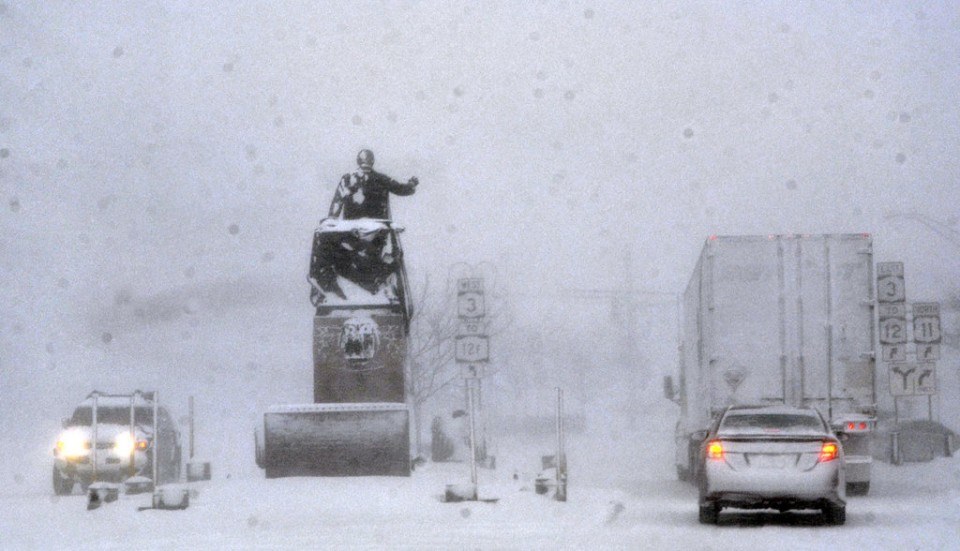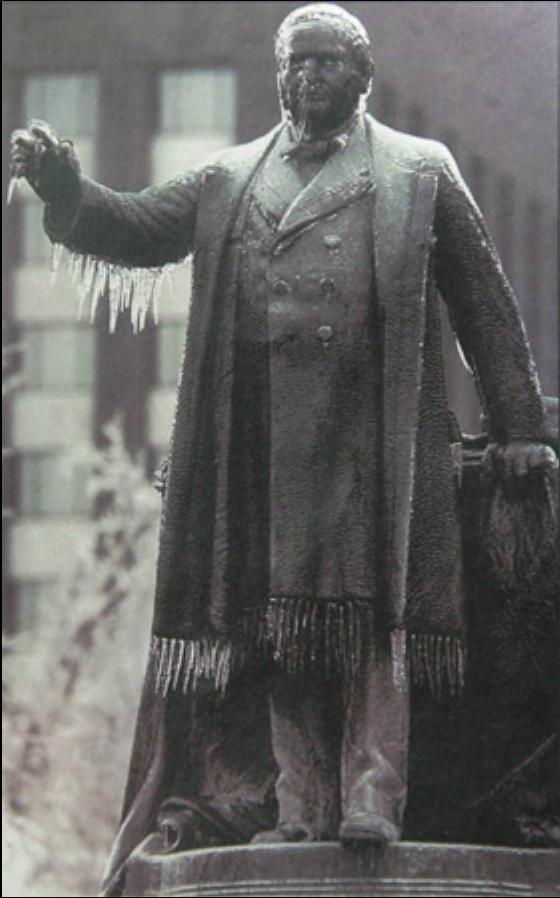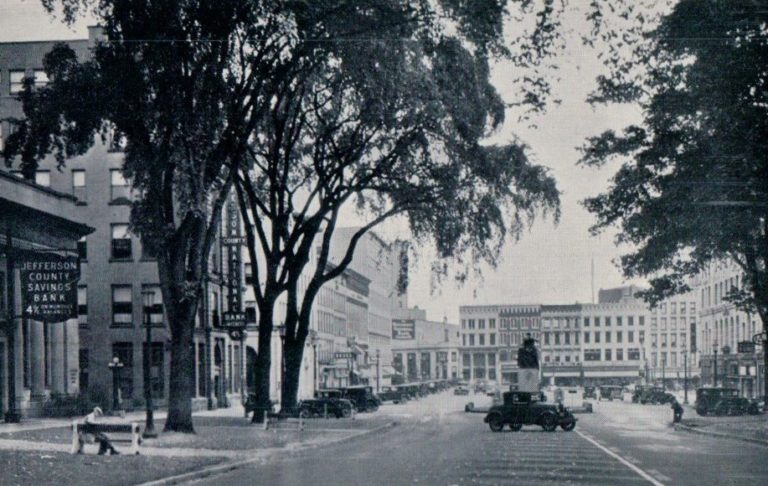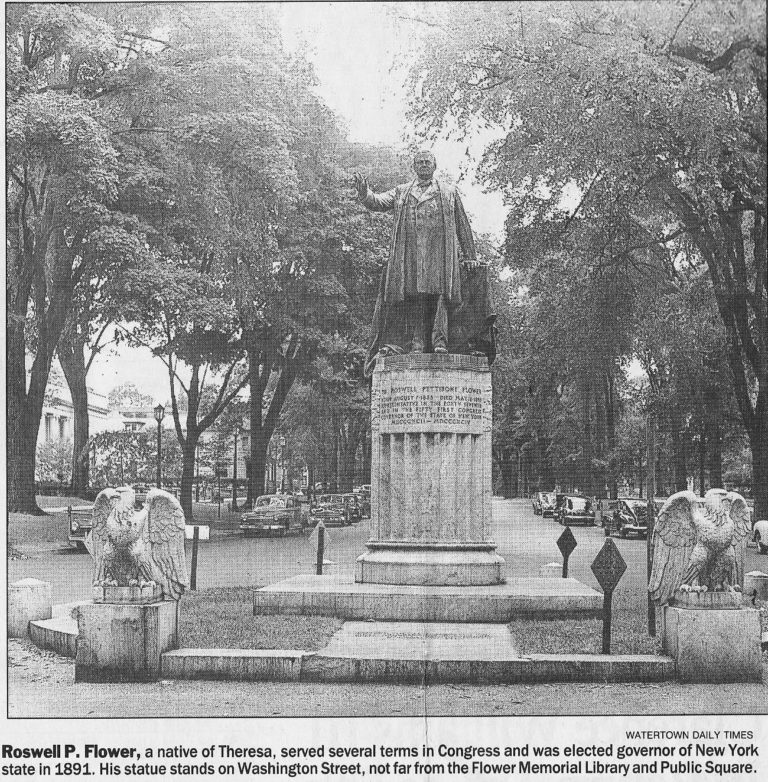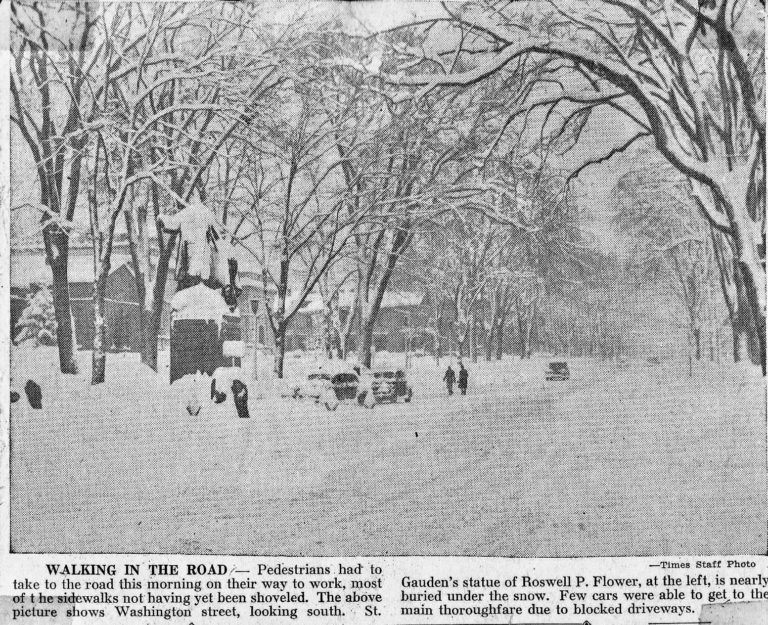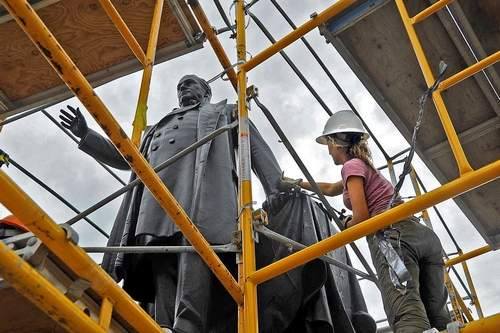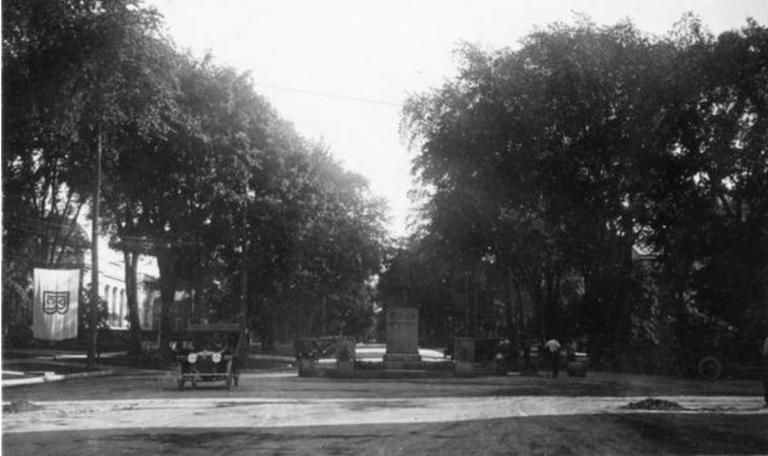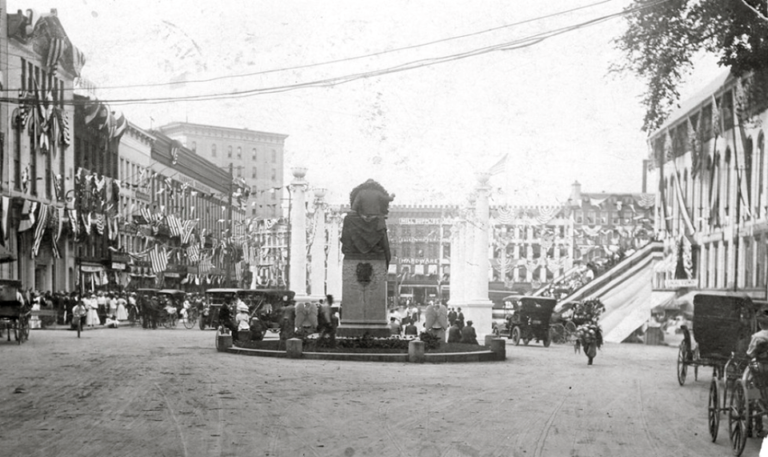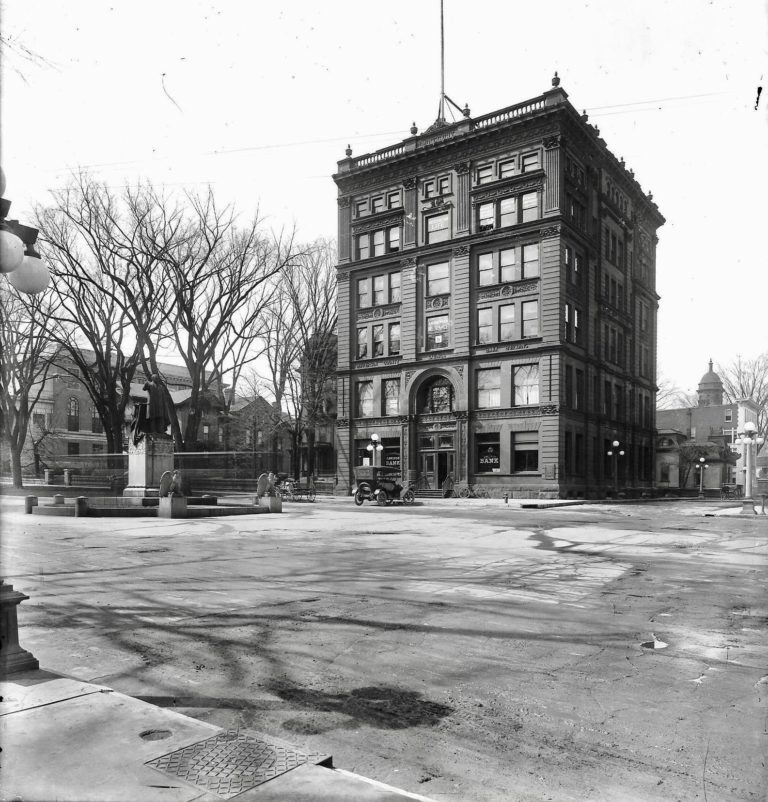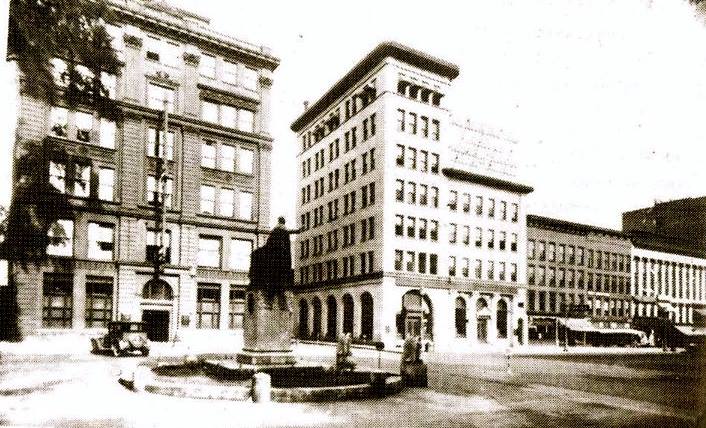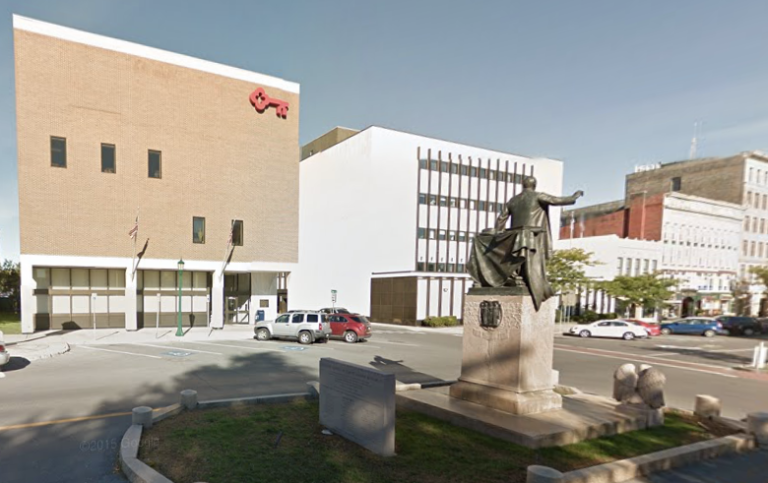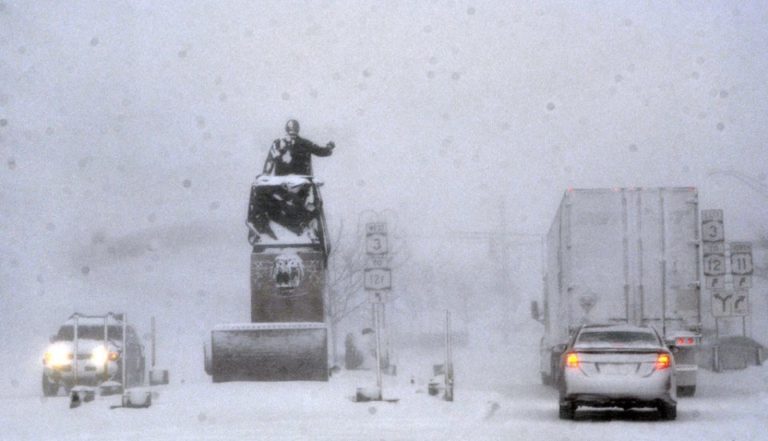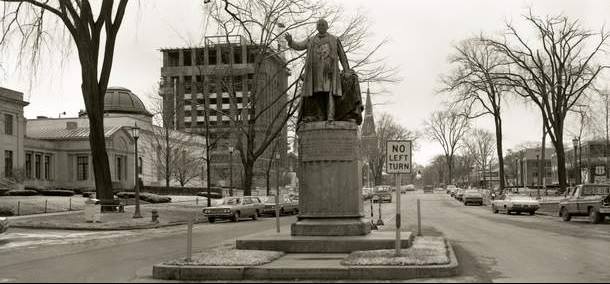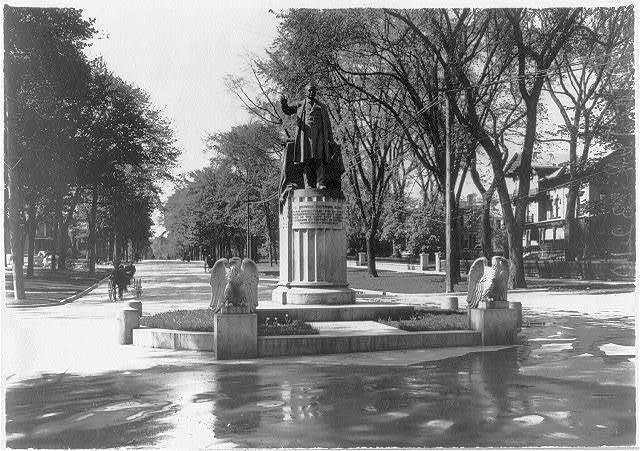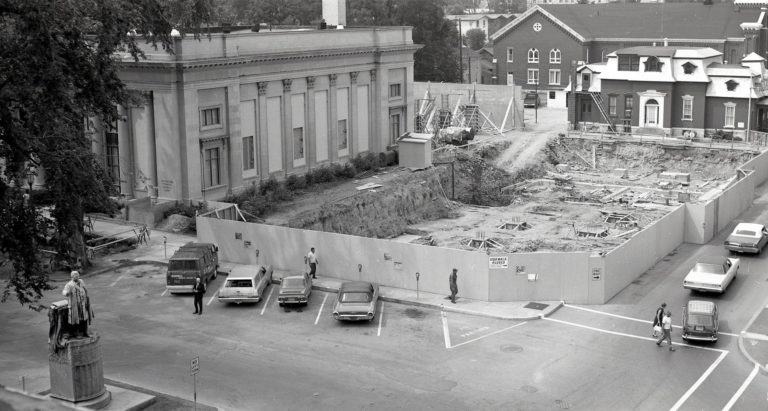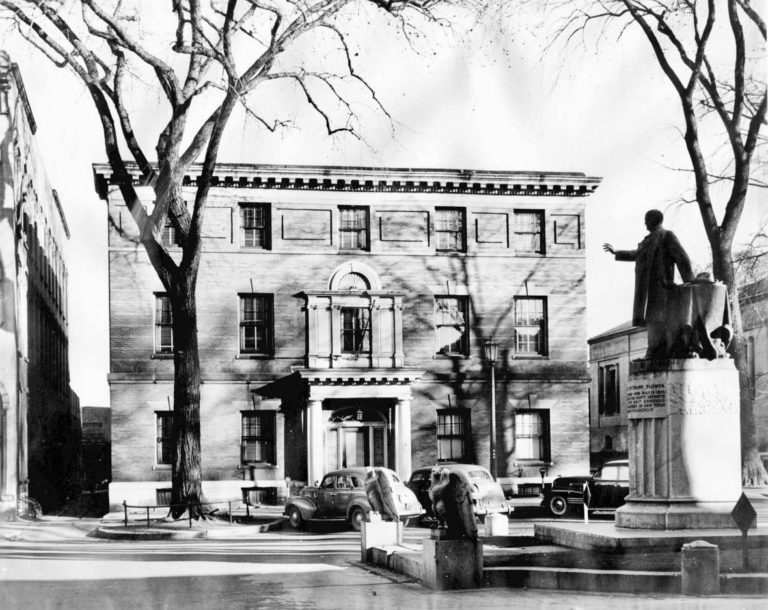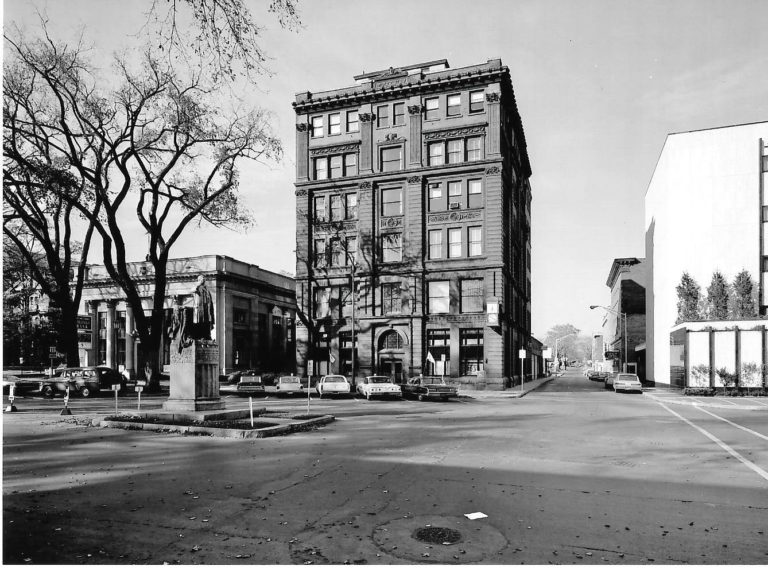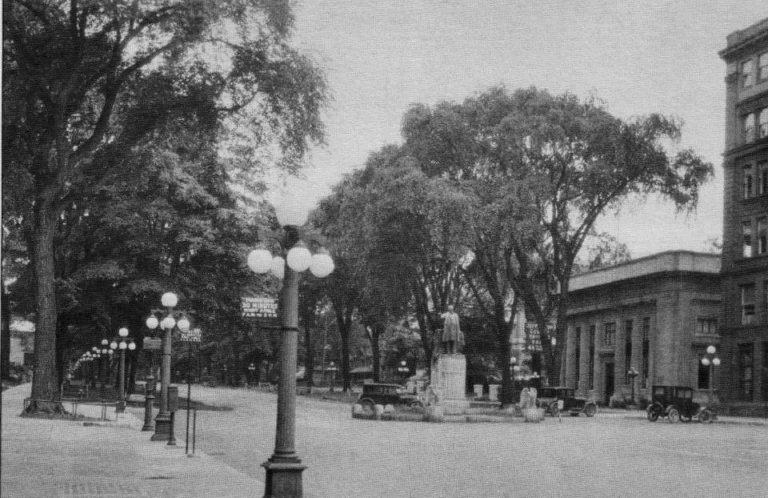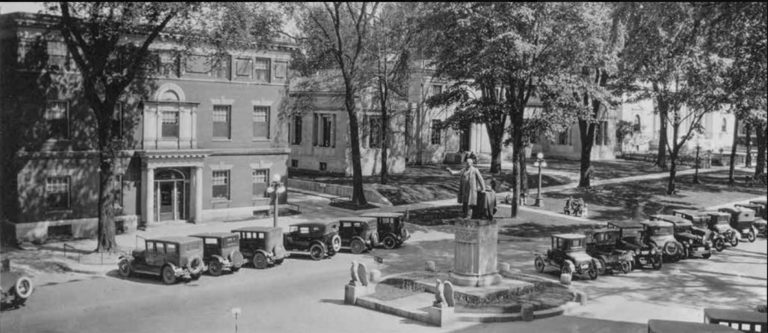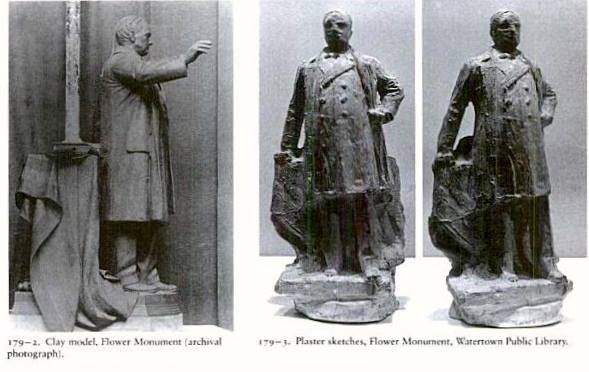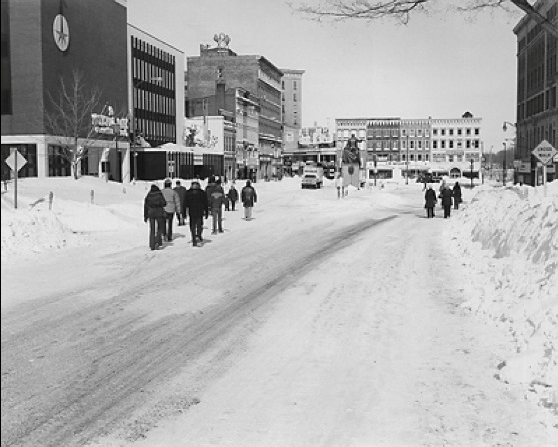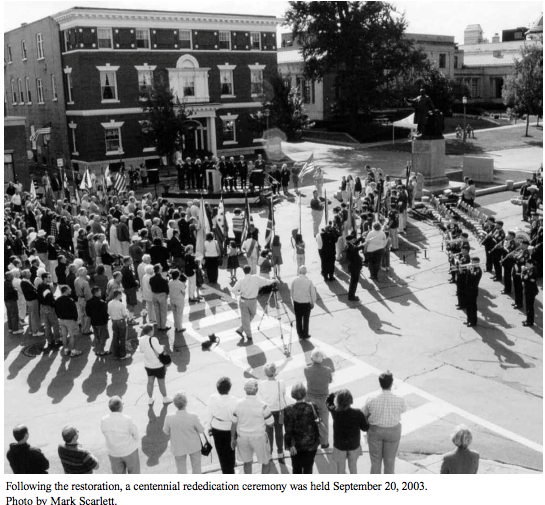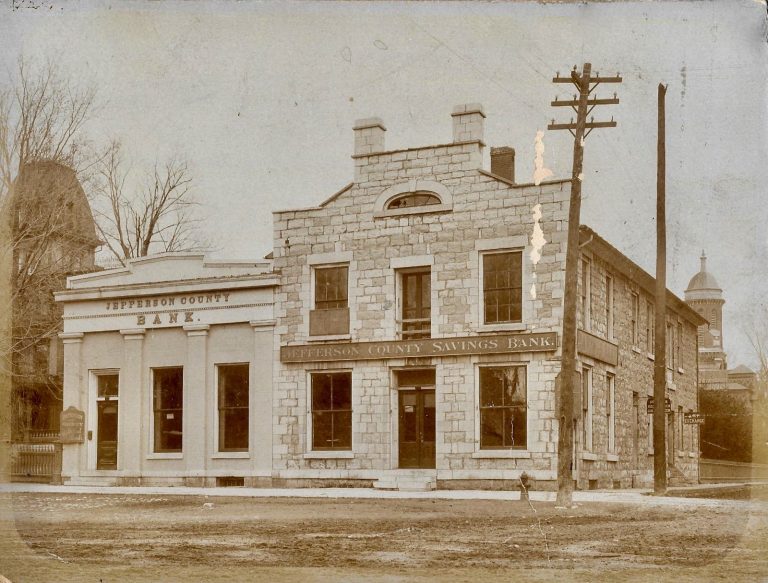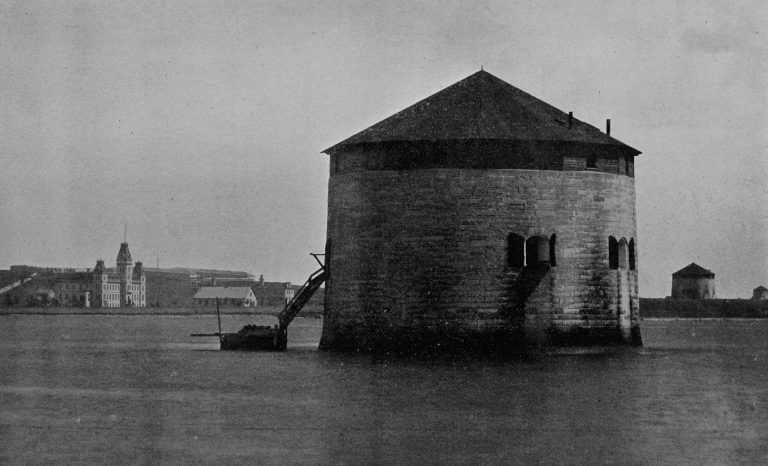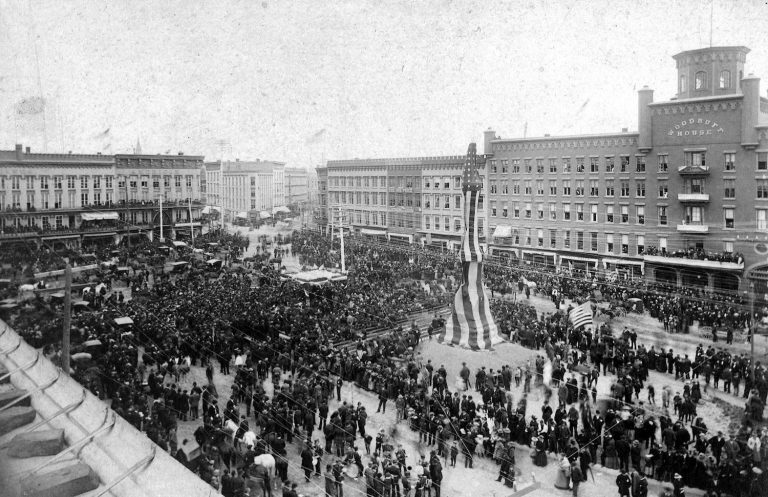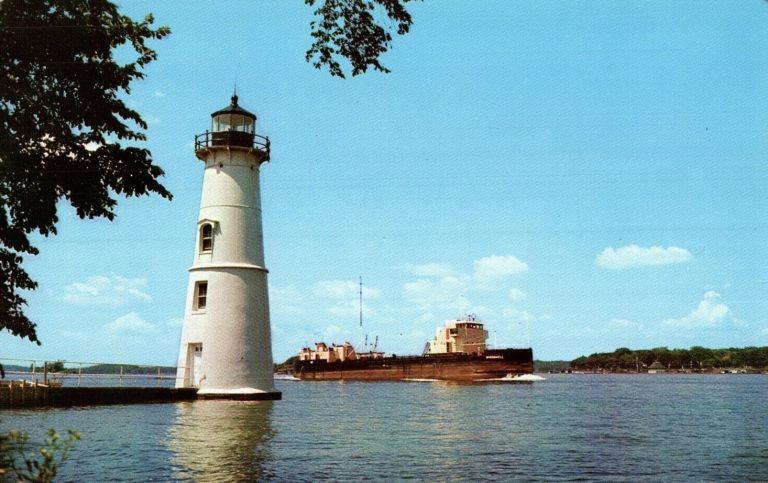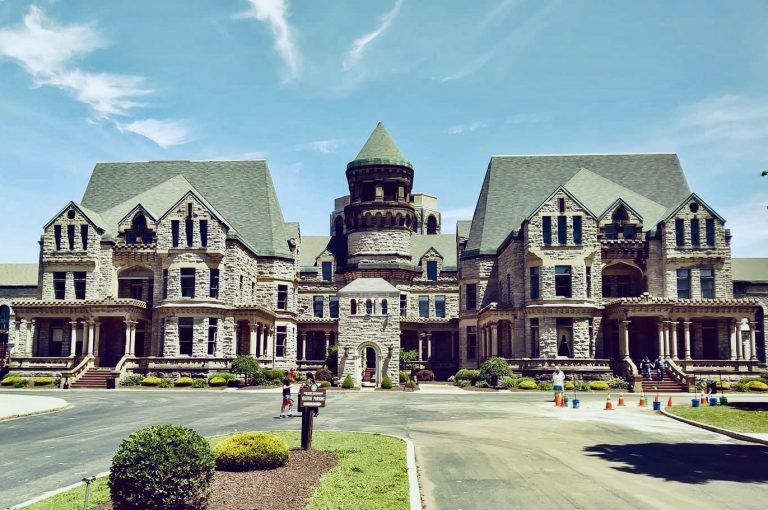Governor Roswell P. Flower Monument, An Augustus Saint-Gaudens Work Of Art
Commissioned for $25,000 in 1900, the Roswell P. Flower Monument has stood on lower Washington Street with a presence that’s seen everything from blizzards, ice storms, world wars, urban renewal, buildings come and go and innumerable citizens gracing the streets and sidewalks of Watertown.
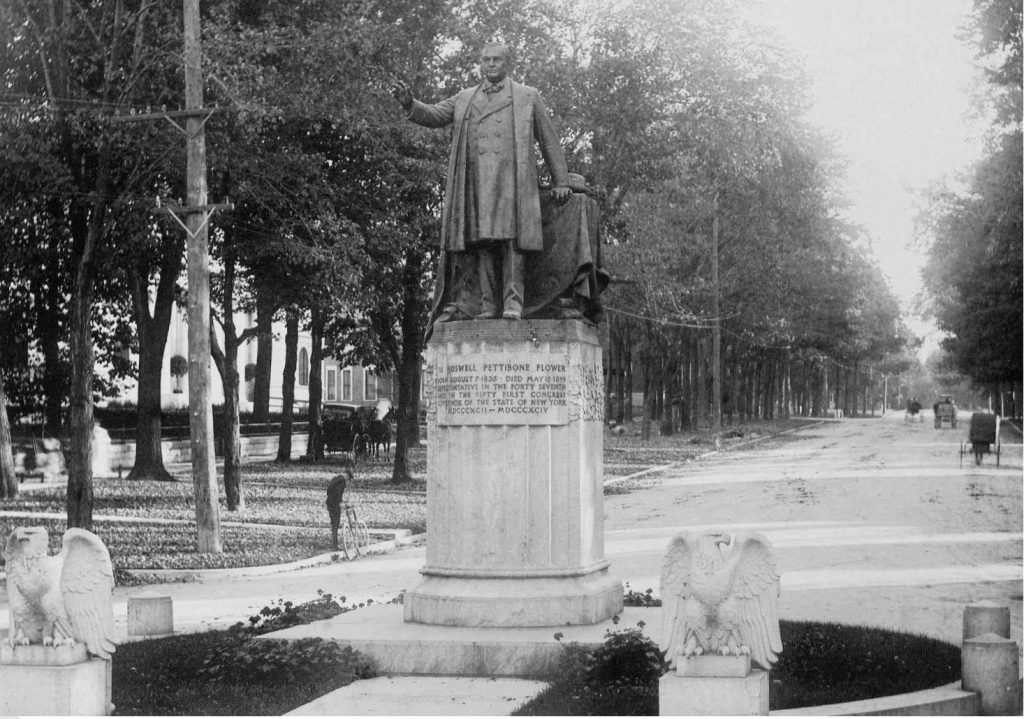
From the Art Inventories Catalog, Smithsonian American Art Museum:
The question was, where to put it?
In April 1901, the Watertown Daily Times reported Mr. Olmsted, the landscape architect then working on City Park, believed the preferred location where Stone Street meets Washington Street was ideal. The article, however, was written at the time roads were being paved and mentioned a change in the landscape—
Washington Street offers a magnificent opportunity. It is parked on both sides with magnificent arching elms. It is so broad that a strip of 15 feet could be reserved in the center of grass, flowering shrubbery and foliage plants, with a drive of 25 feet on either side.
Then with the Flower’s statue at the intersection of Stone Street, with this background of green and bright colors, the long vista of arching elms, would be made a picture looking up from the Square that would be a constant delight, while a wide expanse of asphalt would give nothing to rest the eyes and give pleasures.
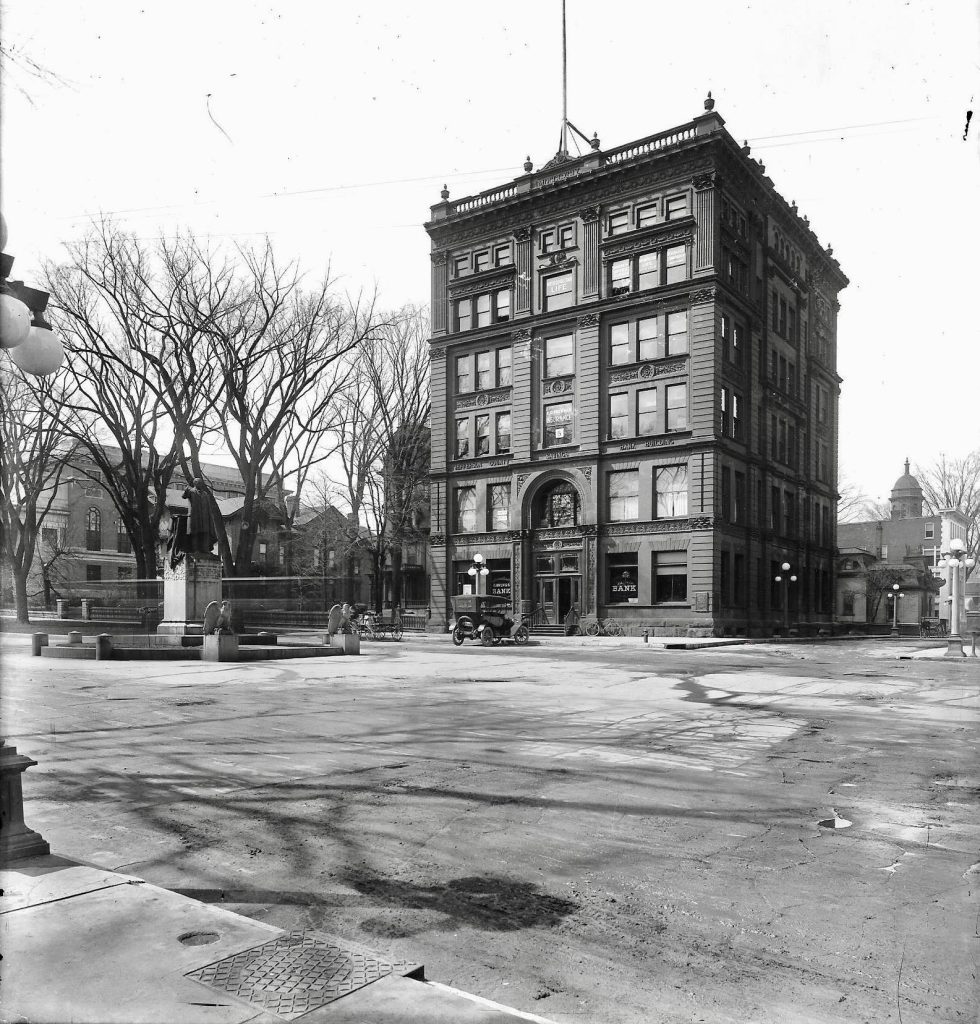
A month and a half later, the Watertown committee for the Flower monument held a meeting at the Jefferson County National Bank, approving the site and crediting the monument’s sculptor, Augustus Saint-Gaudens, with initially selecting the location. Board members included John C. Knowlton, George H. Babcock, E. S. Goodale, Hon. D. C. Middleton, and H. A. Brockway, who forwarded the plans to the city’s Board of Public Works for approval.
Shortly thereafter, Saint-Gaudens suggested an alternative spot, perhaps due to the conflict the separate lanes of traffic posed. He suggested in a letter to the editor of The Times that the old fountain on Public Square be removed and replaced with the current bandstand on the eastern end of the square. There, the Flower monument “would then correspond with the Soldiers’ monument on the other end of the square, giving the Square a properly balanced appearance, which it now very much lacks.”
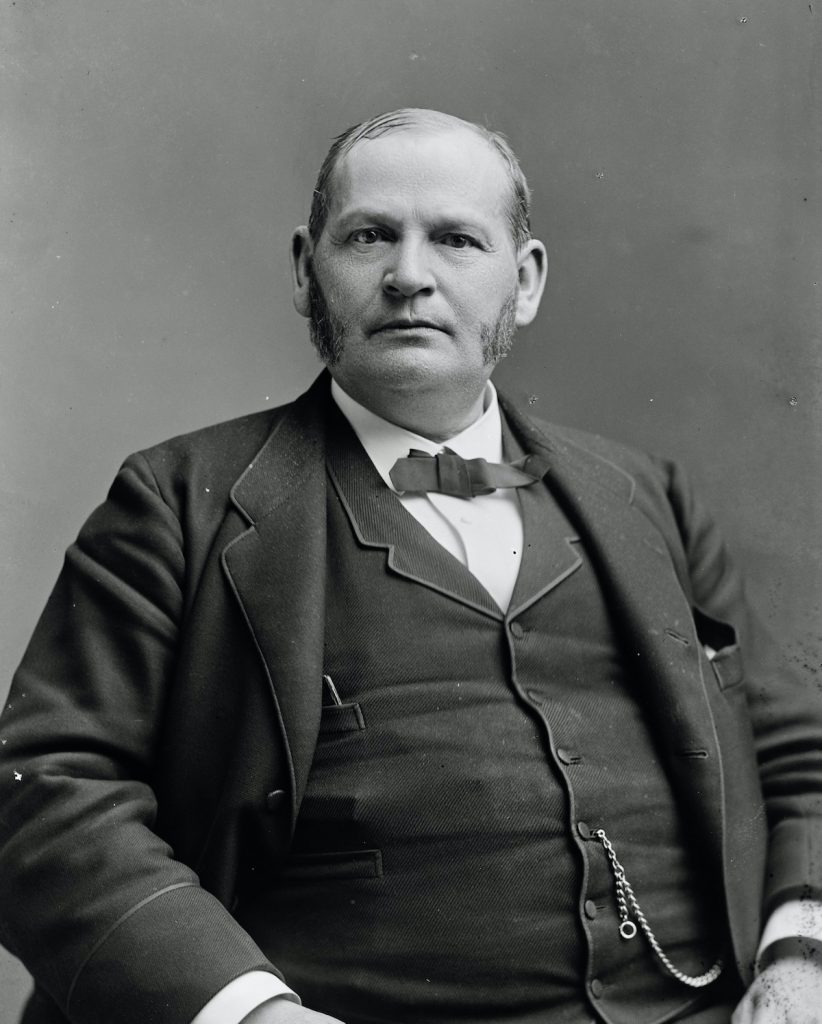
Saint-Gaudens believed it would be appreciated by more people traveling through the Square instead of Washington Street. A central park already existed, whereas initially, the monument’s placement on Washington Street also had a plan for a strip park in the center with two lanes of traffic on either side.
The editor of the Times responded to the letter that, after careful consideration, Saint-Gaudens decided against the proposal, keeping it on Washington at Stone Street. The primary concern was that the Soldiers’ and Sailor’s monument would overshadow it with its stature, creating an imbalance.

With the location finally agreed upon without the two separate lanes of traffic and strip park, the work went forward. In late August, just ten days before its unveiling on Labor Day, Sept. 1, the NYCRR announced it would make reduced rates to Watertown from surrounding areas, including Richland, Sackets Harbor, Cape Vincent, Clayton, Theresa, Lowville, Carthage, and other local points.
An estimated crowd of between 5,000 – 10,000 showed up for the unveiling, The Times reporting—
The bronze statute in the memory of former Governor Flower was unveiled Monday. The eulogies of Dr. Reed, rector of Trinity church, the gift of the Flowers, of former Governor David B. Hill, Senator Spooner, and Senator Elon R. Brown, were received with demonstrations of approval by the people who knew the man honored in his home town and knew his weaknesses as well as his greatness. The stamp of approval of what was said must have been gratifying to the relatives and certainly was encouraging to the speakers.
At the foot of Washington Street, and near the monument were erected seats for the hundreds who had contributed to the monument. And there was a speaker’s stand and a band stand. Also, all decorated with the national colors, as were all the buildings within the range of vision from that central spot.
At the close of Dr. Reed’s prayer little Frederick Halsey Taylor, son of Mr. and Mrs. (Emma Flower) John B. Taylor and grandson of Gov. Flower, pulled the string that released the flag draping the statue, and the folds of the stars and stripes separated at the top of the statue and fluttered to the ground.
The subject of the eagles’ disappearance was revisited in an article from 1975, stating they were removed in the spring of 1950 when the city decided to reconstruct the base. In the
2002 – 2003 Restoration and Rededication
In 2001, an effort to raise funds to assess the need for the restoration of the Flower Monument was headed by Rande Richardson. Shortly thereafter, the city council authorized the formation of a citizens’ task force to commemorate the 100th anniversary of the monument’s dedication. The idea to include replicas of the original eagles was suggested.
Just two years earlier, the Watertown Daily Times reposted an article from Oct. 16, 1975, discussing the long-lost stone eagles, which were then located at a Jacksonville, Florida, church. According to the article—
The eagles were originally property of the city of Watertown. They were moved from the monument in 1950 because of traffic problems and later lent to the Jefferson County Farm School on the Sandy Creek Valley Road. The farm school property has since changed hands three times, and is now (1975) owned by the Spoken Word Assembly.
Another article stated the eagles were removed when the city decided to reconstruct the base and were relocated and installed on the land of the St. Joseph Cupertino Friary near Burville in the mid-50s before ending up in Florida.
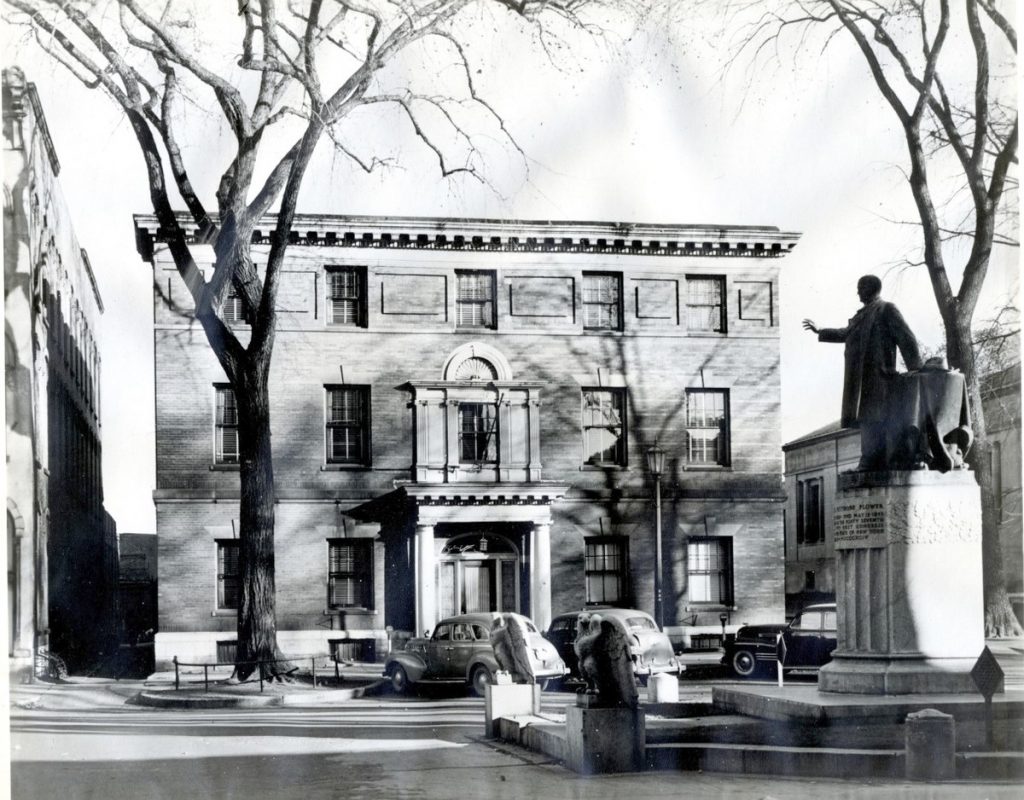
The assessment was completed by Joseph Sembrat, president of Conservation Solutions, District Heights, MD. after Heritage Preservation and the Smithsonian Museum of American History had other conservationists review his credentials. The organizations also contributed half of the $1700 assessment costs.
In April 2002, the city council authorized the committee to apply for a $15,000 grant from the Northern New York Community Foundation on the city’s behalf to be used toward the restoration. A few weeks later, the estimation for restoration would be in hand for $110,000, later stated as $120,00, with the committee having already raised 1/10th the costs.
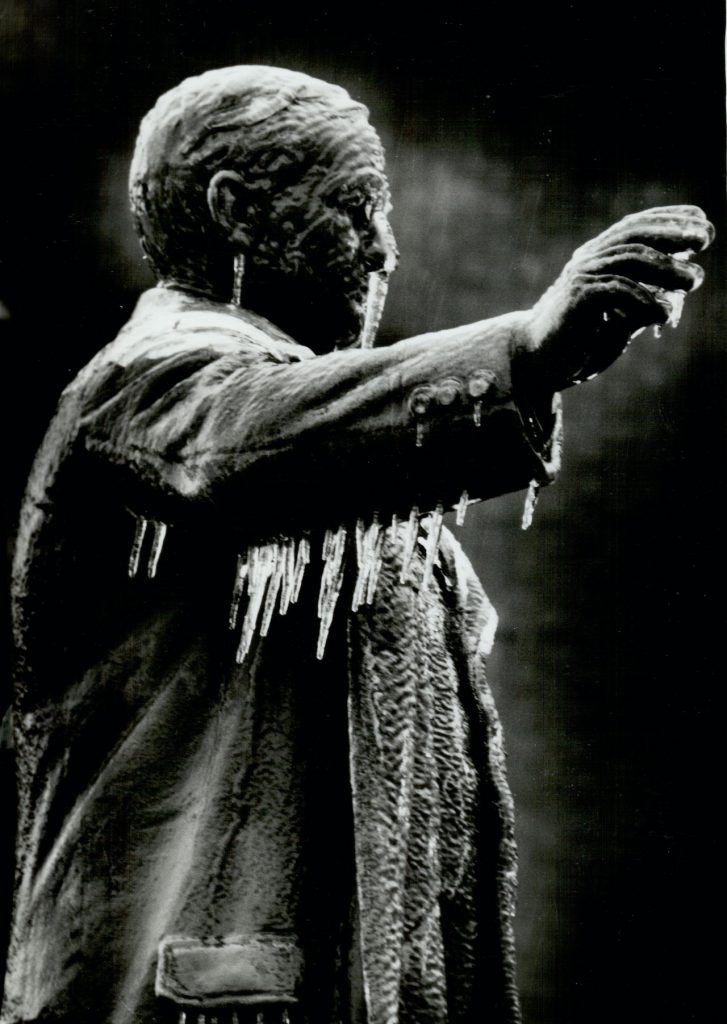
By mid-July, almost $90,000 had been raised, much in the same spirit as was the monument’s genesis, through local organizations totaling over 50 and nearly 200 individuals. By mid-September, they were over 90% toward the goal. By the end of October, the goal would be reached. Included in the efforts was $10,000 to be used for maintaining the monument over the course of about ten years.
The day of the rededication, the Watertown Daily Times editorial piece lauded the grass-roots campaign that raised over $128,000 for the restoration—
The list of benefactors and donors along with those who devoted their countless hours to the project is lengthy. They and the Governor Flower Monument Centennial Committee deserve thanks for bringing it to fruition.
However, one individual in particular, Rande S. Richardson, merits being singled out for gratitude for the guidance he gave the project. It was his idea almost two years ago. He set the direction and goals of the project. Without his vision and enthusiasm, the restoration would never have happened.
